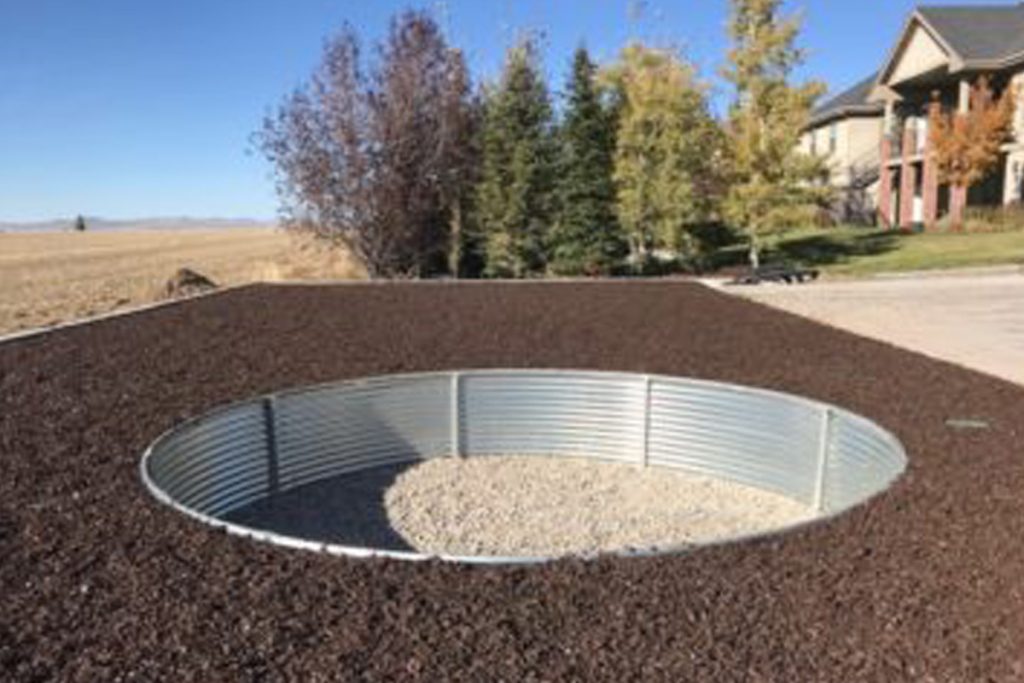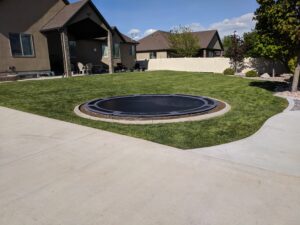Retaining walls are essential when installing an in-ground trampoline. They can be made of many different materials and you can buy pre-made kits or make your own DIY retaining wall. While they can be made from plastic, brick, wood or cement, one of the most effective materials to use for your sunken trampoline retaining wall is metal.
The Importance of a Retaining Wall for Your Buried Trampoline
First, it’s important to understand why a retaining wall is necessary. Then you can make the decision on if a metal retaining wall is the most suitable for you.
-
- Retaining walls prevent soil and debris from falling back into the excavated trampoline pit
- A strong retaining wall means that landscaping and soil integrity is preserved around the perimeter of the in-ground trampoline
- A retaining wall made from a strong material like metal will provide stability and longevity to your in-ground trampoline
Metal Retaining Walls
Retaining walls can be made of many different things from railroad ties to plastic but steel or sheet metal is one of the most popular materials.
Advantages of Metal Retaining Walls
- Galvanized steel is resistant to corrosion and rust, making it an extremely strong and durable choice for an in-ground trampoline retaining wall.
- Corrugated steel can be used in DIY projects if you want to construct the retaining wall yourself.
- Panels of sheet metal can be attached directly to the in-ground trampoline’s frame, which is also an option for a DIY retaining wall.
- Metal will last longer than other materials such as plastic, as it’s resistant and can better withstand the pressure from jumping on the trampoline.
Disadvantages of Metal Retaining Walls
- Metal sheets can be very heavy and difficult to move, especially in DIY projects.
- If it’s not powder-coated or galvanized, the metal may eventually rust.
- You will need to ensure you have the correct hardware to connect the metal pieces – it will need to be heavy duty and good quality.
- Buying a metal retaining wall or sheets of corrugated metal to make one yourself can be quite expensive.
Options for Creating an In-Ground Trampoline Metal Retaining Wall
You can purchase metal retaining wall kits for in-ground trampolines which will come in various sizes with all the equipment you need to install it into the pit. They generally do not come with the trampoline itself, though. These pre-made kits are usually made from galvanized steel and have no sharp edges to worry about. They are weather and rust-proof, ensuring they will last for many years.
One thing to be aware of if going the DIY route with a metal retaining wall is that metal sheets, such as corrugated steel, can have very sharp edges. Ensure that you are wearing appropriate safety gear when handling metal sheets and put padding or soil to cover the top edge of the retaining wall so it doesn’t cause damage to the trampoline mat or to anybody jumping on it.
Another metal you can use to build a retaining wall for your in-ground trampoline is aluminum, which, while lighter and easier to bend, is not as strong as steel.
If you are not comfortable or able to create and install a metal in-ground trampoline retaining wall yourself, there are many professional companies you can contact who can do the work for you.


